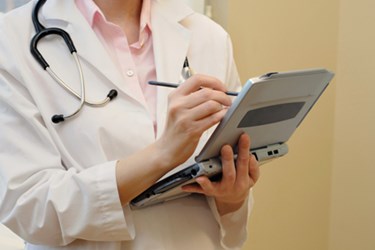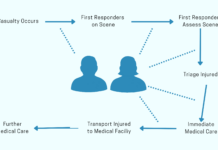By Helena Bogdanova
February 7, 2018
Do you go to the doctor only in case of extreme necessity? Visiting clinics keeps its place among the least favorite activities in society. So, it’s not a surprise that tech-savvy specialists try to minimize the number of such visits by creating new healthcare devices and technologies. People have already got used to super popular fitness wearables that track heart-rate or calories burned; but what about devices that are used for remote monitoring of more complex issues, e.g. chronic diseases?
Swedish researchers claim that the number of patients remotely monitored by physicians increased on 44 percent in 2016. And the rate is expected to grow. Does this tendency mean that patients really entrust their health data to mindless machines, or the reason is hiding in medical institutions’ that aim at cutting the expenses and reducing the attendance at medical facilities? We can find this out by analyzing the pros and cons of remote patient monitoring.
RPM Benefits
- Allows sending data from patients to health professionals in real time. The main benefit of remote patient monitoring or homecare telehealth, is that it allows a patient to use a mobile medical device to perform routine tests and send test results to a doctor in real-time without the necessity of visiting a medical institution. This advantage is of great importance for people with long-term illnesses, who have to communicate with healthcare professionals more often. Homecare telehealth enables easy and quick communication between physicians and patients suffering from sleep disorder, mental, cardiovascular, respiratory and other diseases. Doctors can counsel sick people online with no need to wait for the appointment date.
- Improves patients’ lifestyle. Incorporating RPM in chronic disease management can significantly improve a person’s quality of life. Thanks to RPM, chronically ill people can spend more time at home with their families rather than at hospitals. A monitoring device is also able to inform patients about critical deterioration of health when they need to apply for emergency help as soon as possible.
- Makes healthcare more available. RPM allows doctors to reach out to potential patients. While many people can’t stand going to clinics or, for certain reasons, can’t afford visiting a doctor, RPM will bring free consultation with a physician right to their homes. This is how medical establishments can gain more visitors without overcrowding facilities.
- Saves money. Patients can save considerably thanks to RPM. With home telehealth, it’s not necessary to go to a clinic for prescription or ask your physician about tests results. Besides, due to the decreasing number of unnecessary hospital visits, medical institutions become less crowded and can faster admit patients who need an emergency help. For instance, The specialists from the Oxford University Institute of Biomedical Engineering developed an app that allows patients to avoid unnecessary in-person visits. In the facility where the system was tested, the number of doctor appointments has dropped by 25 percent.
Obstacles to effective RPM usage
- Is not accessible for everyone. RPM requires good broadband connectivity, which is hard to achieve for small healthcare institutions and rural hospitals. On the other hand, it’s important to take into account that not everyone owns a smartphone, and elderly people often face difficulties in using modern gadgets, such as mobile phones.
- Patients and doctors’ skepticism. RPM appears to be the least effective patient engagement initiative according to NEJM Catalyst Insights Council survey. The researchers explain these statistics by the fact that the use of wearables is still not available for everybody. By the way, doctors that were taking part in the survey haven’t noticed any improvements in chronic disease management. In addition, healthcare professionals based on their experience expressed doubt that the technology alone is likely to change behavior of higher-risk patients. Doctors are also concerned about the difficulties they can face handling received data. Some patients are afraid that their private health data can be obtained by third parties and used for dubious purposes.
- The need of additional custom healthcare software. After the data have been collected, IT departments have to redirect it from RPM devices to electronic medical record systems (EMRs) by the means of multiple third-party applications.
- Doubtful reliability. Popular fitness wearables tracking physical activity appeared to have large variations of accuracy with error margins up to 25 percent. The reliability of RPM data is called into question as well. For instance, a review in JAMA Dermatology showed that smartphone apps for melanoma detection have a 30 percent failure rate. The lack of reliability is the most serious problem that needs to be fixed before devices and applications could be used by healthcare providers.
Final verdict
Remote patient monitoring is of great help not only for patients but for healthcare professionals as well. However, RPM is still not available for all sick people depending on their location and remote access capabilities. Besides, doctors have to pay effort in order to engage patients and motivate them to use RPM. And finally, the main drawback of this technology is the unproved accuracy of devices. As long as the possibility of imprecision exists, the effectiveness of RPM will remain uncertain to many.
Source: https://www.healthitoutcomes.com/doc/pros-and-cons-of-remote-patient-monitoring-0001
Summary: The pros discussed in this article are consistent with what I have been reading elsewhere: improved lifestyle, accessibility, time-saving, economical. The cons are what interested me about this article. The author points out that smartphones and internet are not accessible to everyone. I wonder how design could help ease the skepticism of patients and doctors.




